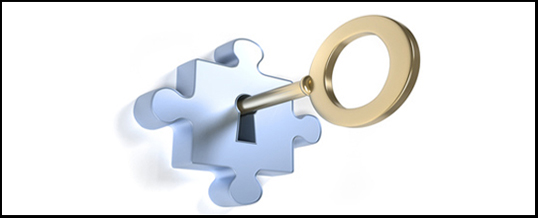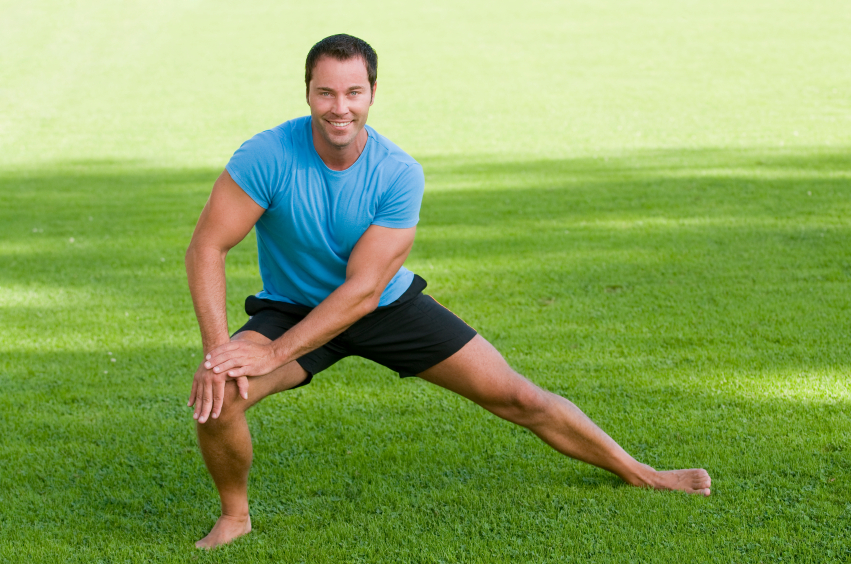
by Peter Winslow
Most people have little or no idea what a personal coach does, or how they can benefit from hiring one.
For some people, having a personal coach or counselor is a tremendous asset. The most important thing is to find a professional you trust and can maintain a working relationship with.
The relationship between counselor and client regards the feelings and attitudes that a client and therapist have towards one another, and the manner in which those feelings and attitudes are expressed.
Effective coaches develop a general overview of the client’s disposition, specific conditions, symptoms, well-being and overall quality of life. They act as personal guides, offer constructive feedback, and facilitate personal, interpersonal, and transpersonal functions. They are often trained to focus on emotional, social, vocational, educational, developmental, organizational and health-related concerns.
Individuals who have endured profound life experiences can make exceptional coaches and consultants. The therapeutic skills of psychologists or psychiatrists who are specially trained to treat neurosis and psychosis are not necessary for everyone. There is a growing number of people who simply need to slow down, “hear themselves think” and get the assistance they need to determine and achieve their goals.
Both coaching and mentoring are processes that offer motivation and support for determining and reaching your personal goals. Coaches and mentors:
1. Facilitate the needs, motivations, desires, and skills that help the client make real and lasting changes.
2. Utilize specific techniques to fit the client’s own personal needs.
3. Help the client set realistic and appropriate goals.
4. Observe, listen, ask questions and offer positive feeback.
5. Supply the tools and techniques for measurable progress.
6. Encourage a commitment to action for personal growth and change.
7. Are supportive and non-judgemental of the client, their beliefs and lifestyle.
8. Encourage and help clients to develop their talents.
9. Possess qualifications and experience in the areas that the coaching is offered.
Peter

by Peter Winslow
If you have been diagnosed with Ankylosing Spondylitis, you probably carry a genetic marker called the Human Leukocyte Antigen or HLA-B27.
There’s a lot of attention paid to this marker, with speculation that it may be the “cause” of AS. But do you know that approximately 98% of people with HLA-B27 never get AS? That’s right—only two people out of a hundred with HLA-B27 ever get the disease.
Studies also show that 10-30% of AS sufferers don’t have the HLA-B27 gene at all. Clearly, genetics is not the whole story.
Recently, the Centers for Disease Control and Prevention reported that 65-100% of people with a specific health history will suffer from autoimmune diseases like AS in adulthood. Researchers call it an “Adverse Childhood Experience” or ACE.
Examples of ACE’s include physical, emotional and sexual abuse, alcohol and substance abuse, exposure to family members with mental illnesses, and other household dysfunctions.
Environmental factors like ACE’s coupled with genetic predispositions may illustrate a more accurate synopsis of who succumbs to rheumatic illnesses like Ankylosing Spondylitis, and why.
Peter

by Peter Winslow
If you could create a new body for yourself, what would it be like?
Consider the premise carefully, because this isn’t a matter of science fiction—it’s a fact. The fact is, even the body you lived in yesterday is different from the one you’re in today.
How? In a process called cellular mitosis the cells in your body birth new cells repeatedly throughout your lifetime. The body reinvents itself again and again through the years and it’s plainly evident. Just watch a youngster growing up. What you’re witnessing is the process of cellular growth and regeneration occurring with the passing of time.
Some cells reproduce faster than others; the cells that lined your stomach two hours ago have already been replaced with new ones whose daughter cells will soon be born. Others take longer, depending on type and function.
It seems miraculous, but in a few years you’ll have a completely rebuilt body altogether. Your beliefs and behaviors will help determine what that body becomes, as your chosen activities either strengthen or weaken you. Here’s how it works:
Neuroscientists tell us that brain cells, called neurons, reproduce differently than other cells. They adapt to their environment depending on what you learn and what new behaviors you acquire.
In a process called neuroplasticity the structure of the brain is frequently remodeled. Doctors often see it when studying patients who’ve suffered head injuries and have since created new neuronal pathways to compensate for the loss.
In cases of head injuries that cause blindness, neuroscientists have observed amazing changes in the brains of the victims. Using functional MRI’s and brain imaging scans they have isolated electro-magnetic energy emitted by the visual cortex, a portion consisting of approximately one third of the brain, and found that this region has adapted and retrained itself in these patients to supervise new and complex skills.
Neuroplasticity is the process by which blind people develop their highly acute senses of hearing, touch, taste and smell and are often able to master completely new tasks and creative endeavors that the rest of us find challenging or even impossible.
Through a similar process called neurogenesis brand new neurons are created when you enrich your environment by taking up new mental exercises like studying a foreign language, playing a musical instrument or practicing meditation.
Tackling challenging skills like these increases cognitive ability and rebuilds memory function. This means that your new and challenging mind-body activities enhance neuroplasticity in the brain.
Here’s the catch: doctors say the initial changes are only temporary. For them to become permanent you must be emotionally engaged in the process. Your new skills must be taxing, interesting and highly motivating for the benefits to remain.
Permanent plasticity happens when you feel passion, confidence, gratitude and a zest for life. This is because positive thoughts and a sense of wellbeing are necessary to release the specific neurotransmitters and other brain chemicals that enable the changes to stick.
This is solid proof of the mind-body connection: you must consciously choose to feel passion and motivation for the benefits of your new activities to become lasting and permanent.
Neurologists have learned that neuroplasticity operates in two ways; it can be either positive or negative. Here’s an example of what they call “negative” plasticity:
Many elderly people are understandably afraid of falling. Trying to avoid a fall by looking down at the ground in front of them while they walk narrows their field of vision, which in turn trains the brain to decrease coordination and balance. Fear is the passion and motivation that powers the process; the resulting changes in the brain impair mobility and actually increase the likelihood of a fall.
Researchers say chronic pain is also an example of negative plasticity. It’s the result of the brain repeatedly firing signals over the same neuron pathways over time.
It’s like driving a truck on a muddy dirt road; the more you drive over them, the deeper the grooves become. The repeated pain sensations construct what is called an “information superhighway” on the roadmap of the brain.
Temporary pain signals then become an ingrained habit. This means that chronic pain is primarily a function of the brain, not the body.
The good news is, it is not necessarily permanent. To reverse the damage you must promote neuroplasticity and neurogenesis. These processes repair and replace the old chronic patterns and permanently change the brain.
This is the proven antidote for chronic pain.
If you want to build a healthier body than the one you’ve got now, it really is possible. What can you do? Researchers say that vigorous physical exercise is required for neuroplasticity and neurogenesis to take root. Mental exercises are required as well. This may be why the cure for chronic pain cannot be found in a pill.
Your job is simple: find and follow the practices that help your brain and body repair the damage. Then be positive and passionate about getting results. Have no fear; the ASVA is here to help you with that.
It sure beats the alternative: continuing to suffer in fear and dread of an unhealthy future, and doing little or nothing to strengthen yourself.
Remember, you’re already engaged in building an entirely new and different body, a process that completes itself every few years. The work is alive and ongoing throughout your lifetime and whether you realize it or not, you are taking an active role in the process.
I am reminded of these famous and fateful words: Get busy living, or get busy dying.
The choice is yours, so choose wisely.
Peter
SOURCES:
Forest Tennant, MD, “Neurogenesis: A Goal of Chronic Pain Treatment,” Practical Pain Management, P0611:d01, 10/2010.
S. Petersen-Felix and M. Curatolo, “Neuroplasticity – An Important Factor in Acute and Chronic Pain,” Swiss Med Weekly, 2002, 132:273-278.
J. Farmer, MD, “Effects of Voluntary Exercise on Synaptic Plasticity and Gene Expression,” Neuroscience, 124:71-9, 2004.
P.M. Arnstein, “The Neuroplastic Phenomenon: A Physiologic Link Between Chronic Pain and Learning,” The Journal of Neuroscience Nursing,” 1997, 29(3):179-86.
Terence Coderre, et al., “Contribution of Central Neuroplasticity to Pathological Pain,” Pain, 52(3):259-285, 1993.

by Peter Winslow
Recent clinical studies funded by the Centers for Disease Control and Prevention document the impact of childhood stress on inflammatory responses later in life. These studies link a specific type of stress with autoimmune diseases like Rheumatoid Arthritis and Ankylosing Spondylitis. Researchers call it an “Adverse Childhood Experience” or ACE.
Examples of ACE’s include physical, emotional and sexual abuse, alcohol and substance abuse, exposure to family members with mental illnesses, and other household dysfunctions.
Did you have an “adverse childhood experience”? Were you exposed to emotional or physical abuse, substance abuse, mental illness or other family dysfunction? Are you aware that buried stress from your childhood is root factor which may be central to your illness?
If you have AS, you probably had an ACE when you were a kid, and the buried stress you carry is still damaging your body. Sadly, there is no pill to cure ACE’s, and there’s not much your physicians can do to help you.
To solve the problem, effective stress relief is imperative. Proper relief from buried stress is a primary key to recovery from autoimmune disorders like Ankylosing Spondylitis.
Peter

by Peter Winslow
Today I am pleased to offer you more must-know nuggets of highly powerful “insider information” for attaining remission and recovery from Ankylosing Spondylitis.
Before I do, I’ll remind you that the ASVA is completely different from other AS support groups, and we diverge from the Western Medical approach to chronic illness mainly because of our beliefs and practices.
The big difference between us and the others?
They are interested in providing drug treatments, radical diets, or basic coping skills you can use to “manage” your symptoms.
I am showing you how to make a full recovery from your symptoms and finally put an end to the never-ending gymnastics of “dis-ease management.”
What is my credential for this?
I was diagnosed with AS when I was 24. For ten long years I suffered with excruciating pain and stiffness, terrible mental and emotional anxiety, and despondent hopelessness. Yet I never stopped searching for relief in a world that seemed to offer no real answers.
After many years of seeking and experimenting, I found a mosaic of mind/body techniques that when used properly, began to dispatch my symptoms. I eventually used them to completely abolish the pain and stress of Ankylosing Spondylitis from my life.
I made a full recovery from all my symptoms including chronic, traumatic pain, daily spasms and stiffness, extreme sciatica, addiction to pain medications, clinical depression, anger and emotional issues, resentment, poor self-image and all the rest of it.
I am in complete remission now for over 25 years.
You may know that with great power comes great responsibility. I certainly do. I soon recognized a selfless duty to share the gifts I’d been given with others who would benefit from my example.
So I worked for years to design a road map for remission and recovery from AS, a process which has come to be called the Winslow Method™.
The methods in my system are not clinical subjects you can study at school; they are a precise series of beliefs, behaviors, tools and techniques that led me to full recovery, and I am living proof that they work. So are many of my clients.
No matter how severe your condition is, you can and will experience substantial improvement by using the Winslow Method™. Here are just some of the topics:
– 3 Beliefs that people in remission hold
– 3 Keys to recovery from Ankylosing Spondylitis
– 3 Ways to improve your health with no effort
– 5 Mindsets for recovery from dis-ease
– 8 Practices to accelerate the healing process
– How to stop your pain naturally
– How to put an end to your buried stress
– How to energize your body for faster results, and
– The exact steps I took for remission and recovery from AS
I bet you’re excited to begin a new and better life, so let’s dive right in. We’ll start with number one on the list, the 3 beliefs that people in remission from chronic illnesses all share:
First, we believe that a higher intelligence lives within us.
Whether we call it the subconscious mind, our divine nature, a higher self, or God doesn’t really matter; we just know there is a power operating within us that can heal the body.
This “higher intelligence” is what operates the millions upon millions of internal functions in the human anatomy. It keeps your heart beating and your food digesting even if you don’t know how it works. It heals your wounds and regulates your systems faultlessly on a daily basis. Like it or not, there is a subconscious intelligence smarter than the conscious mind at work within you, running the show.
The second thing people in remission believe is that what we think about affects our bodies.
We know that what we think and the intensity of our thoughts directly impacts our behaviors, the choices we make, and ultimately, the quality of our lives. To be healthy you must replace all negative, pessimistic, victimizing, destructive or hopeless thoughts and feelings with a bold and unwavering attitude of personal transformation.
The third belief we share is that we can help our bodies heal.
This one’s as easy as 1 -2 -3:
1. Decide that you are truly ready to go from pain and suffering to health and wellness
2. Believe that you can achieve it, and
3. Make a commitment to follow through on your decision.
It really is that simple. With the proper guidance you really can do it.
You have nothing to lose but the pain.
If you have questions or comments about this message, I’d love to hear from you. Even if you completely disagree with what I’ve done, give it to me straight and don’t hold back!
Peter

by Peter Winslow
Earlier this month I received an email from a young man diagnosed with Ankylosing Spondylitis who recently read my book Heal For Real. He said:
“Peter – Thanks for your guidance. I am progressing well, I’ve come off all medications and I feel better now than at any time in the last few years. As I finish resolving my emotional issues and fears, I plan to go back to college and get degreed so I can help others change their lives in the way you have inspired my changes.“
You might imagine I’d be pleased as punch at the news, and of course I am. Yet I realize it isn’t anything I did that led to his recovery; the credit is all his. He took the tools and information available to him, and he put them to good use.
My question to you is this: Are you making use of the resources available to help you help yourself feel better? And – if not, why not?
Maybe you don’t believe it can happen. If this is the case, then certainly you’re right. There is no teaching or psychology that says you can accomplish a thing if you do not believe you can.
Now, consider for a moment the biblical expression “Believe that you receive and it is added unto you.” This wise and well-known adage asks you to let go of limiting beliefs that hold you back and replace them with a bigger picture of who you really are.
Believe this: Your body is equipped with the power to heal itself. Within you is an instinctive inner intelligence that repairs, operates, supervises and builds your body from the ground up. It ever endeavors to keep you going in the direction of health and healing, even when your beliefs, behaviors or the environment you’re exposed to get in the way.
Your job is to recognize, understand and work with the inner intelligence that repairs your body, and let go of the negative thoughts and erroneous beliefs that work against you. You really can help yourself feel better by adopting the proper attitudes, behaviors and activities that lead to health and healing, and you can do that at any time.
What have you got to lose?
Peter






